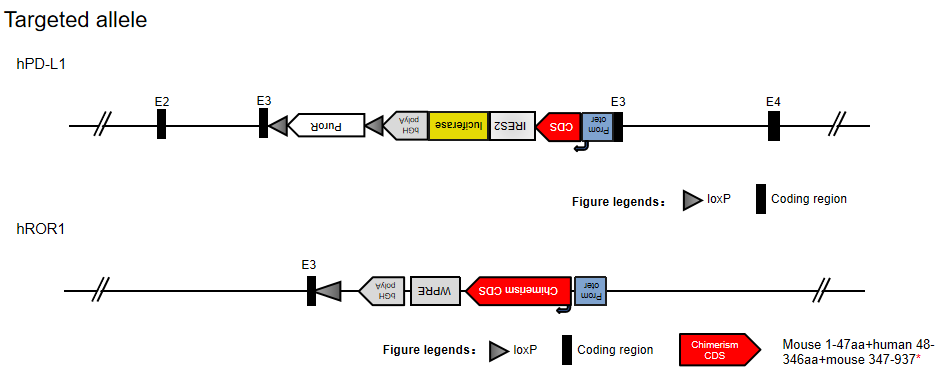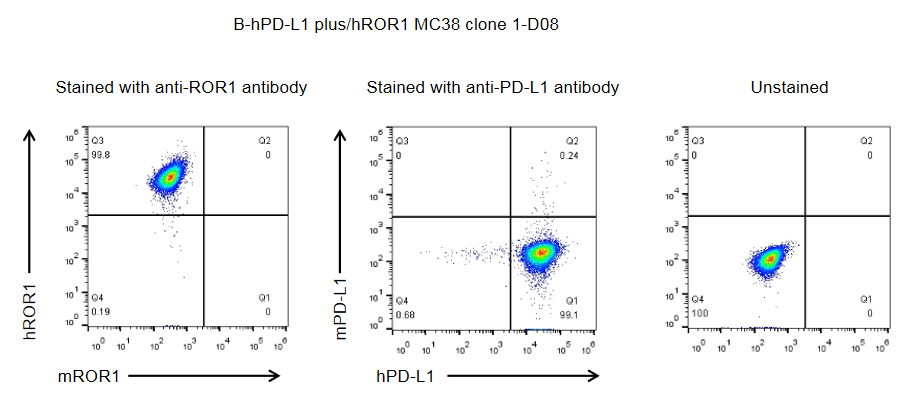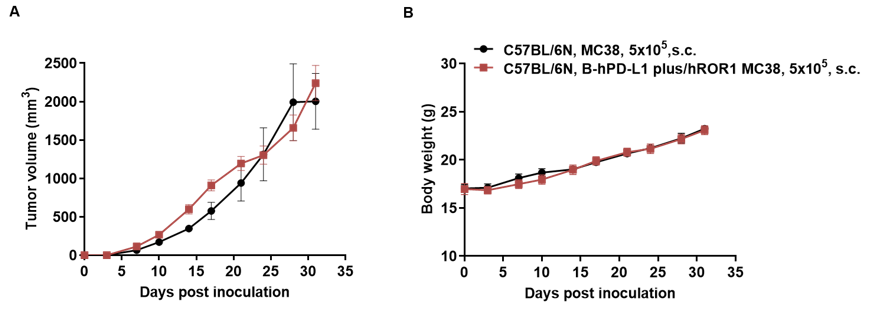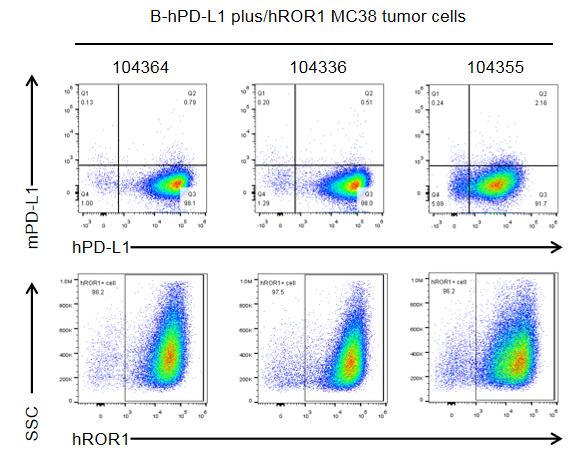Common name
|
B-hPD-L1 plus/hROR1 MC38
|
Catalog number
|
111875
|
|
Aliases
|
CD274, PDCD1L1
NTRKR1, dJ537F10.1
|
Disease
|
Colon carcinoma
|
Organism
|
Mouse
|
Strain
|
C57BL/6
|
|
Tissue types
|
Colon
|
Tissue
|
Colon
|
Description
The mouse Pdl1 gene and Ror1 gene were replaced by human PD-L1 and ROR1 coding sequence in B-hPD-L1 plus/hROR1 MC38 cells. Human PD-L1 and ROR1 are highly expressed on the surface of B-hPD-L1 plus/hROR1 MC38 cells.
Application
B-hPD-L1 plus/hROR1 MC38 cells have the capability to establish tumors
in vivo and can be used for efficacy studies.
Targeting strategy

Gene targeting strategy for B-hPD-L1 plus/hROR1 MC38 cells. The exogenous promoter and human PD-L1 coding sequence was inserted to replace part of murine exon 3. The insertion disrupts the endogenous murine Pdl1 gene, resulting in a non-functional transcript. The exogenous promoter and human ROR1 coding sequence was inserted to replace part of murine exon 2 and all of exon 3. The insertion disrupts the endogenous murine Ror1 gene, resulting in a non-functional transcript.
Protein expression analysis

PD-L1 and ROR1 expression analysis in B-hPD-L1 plus/hROR1 MC38 cells by flow cytometry. Single cell suspensions from B-hPD-L1 plus/hROR1 MC38 cultures were stained with species-specific anti-PD-L1 and anti-ROR1 antibodies. Human PD-L1 and ROR1 were detected on the surface of B-hPD-L1 plus/hROR1 MC38 cells. The 1-D08 clone of B-hPD-L1 plus/hROR1 MC38 cells was used for in vivo experiments.
Tumor growth curve & Body weight changes

Subcutaneous homograft tumor growth of B-hPD-L1 plus/hROR1 MC38 cells. B-hPD-L1 plus/hROR1 MC38 cells (5x105) and wild-type MC38 cells (5x105) were subcutaneously implanted into C57BL/6N mice (female, 6-week-old, n=6). Tumor volume and body weight were measured twice a week. (A) Average tumor volume ± SEM. (B) Body weight (Mean± SEM). Volume was expressed in mm3 using the formula: V=0.5 X long diameter X short diameter2. As shown in panel A, B-hPD-L1 plus/hROR1 MC38 cells were able to establish tumors in vivo and can be used for efficacy studies.
Protein expression analysis of tumor cells

B-hPD-L1 plus/hROR1 MC38 cells were subcutaneously transplanted into C57BL/6N mice (n=8). At the end of the experiment, tumor cells were harvested and assessed for human PD-L1 and ROR1 expression by flow cytometry. As shown, human PD-L1 and ROR1 were highly expressed on the surface of tumor cells. Therefore, B-hPD-L1 plus/hROR1 MC38 cells can be used for in vivo efficacy studies of novel PD-L1 and ROR1 therapeutics.















